Two schematic ways to represent the economy and the environment:
“we can no longer afford to ignore the dependency of the economy and social progress on the environmental resource base"
Edward O. Wilson, The Future of Life, p. 26.
Bourgeois biases | Labor theory | Two competing views | Merchant's model | Ecological model | Technological model

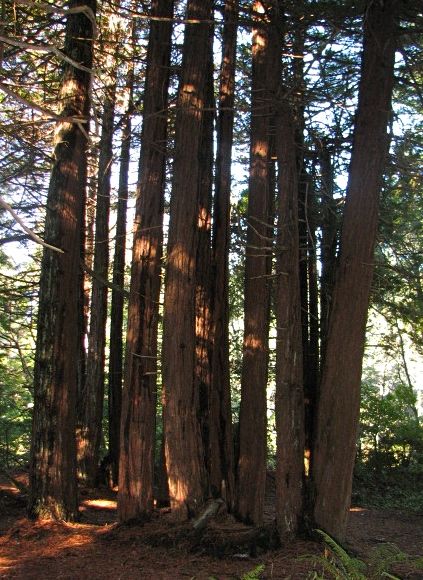 “What humanity is inflicting on itself and Earth is, to use a modern metaphor, the result of a mistake in capital investment. Having appropriated the planet’s natural resources, we choose to annuitize them with short-term maturity reached by progressively increasing payouts. At the time it seemed a wise decision. To many it still does.
“What humanity is inflicting on itself and Earth is, to use a modern metaphor, the result of a mistake in capital investment. Having appropriated the planet’s natural resources, we choose to annuitize them with short-term maturity reached by progressively increasing payouts. At the time it seemed a wise decision. To many it still does.
But there is a problem: the key elements of natural capital, the Earth’s arable land, ground water, forests, marine fisheries, and petroleum are ultimately finite, and not subject to proportionate capital growth.”
“Moreover they are being decapitalized by over harvesting and environmental destruction.”
p. 149.
“With population and consumption continuing to grow, the per-capita resources left to be harvested are shrinking. The long-term prospects are not promising. Awakened at last to this approaching difficulty, we have begun a frantic search for substitutes.”
pp. 149-50.
Nature's economy is older than human accounting systems as represented by this redwood forest.
bourgeois biases | Labor theory | Two competing views | Merchant's model | Ecological model | Technological model
Next

1. A linear and formulaic way is the labor theory of value:

A long-held belief that the amount of time it takes to produce materials determines their worth; there is an agrarian basis to this perspective but also a manufacturing bias that compared animal and human hand-work to ascertain the value of goods and to a lesser extent services.
2. Empty versus full world's represent a dialectical view:
Twin circles, depict how the economy sustains technology and either is seen not to feed off of the ecological conditions, or does effectively diminish ecological services on which commercial transactions depend.
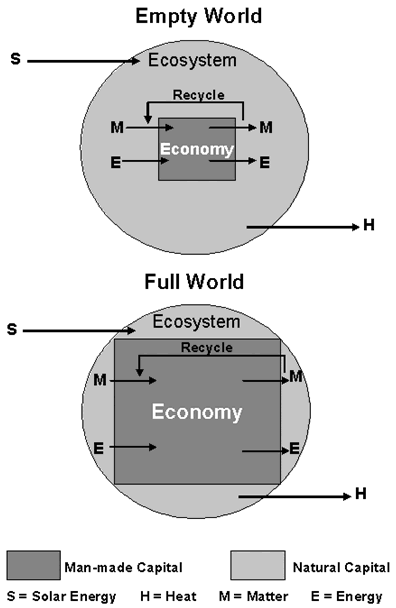
Next, reconciliation of the above dialectic?
bourgeois biases | Labor theory | Two competing views | Merchant's model | Ecological model | Technological model
Two uses of concentric circles to depict natural & social relations.


1.
Carolyn Merchant's "ecological revolutions" viewpoint where three concentric circles–tinted green, pink, and white matted–depict a situation where these spheres recursively sustain one another:
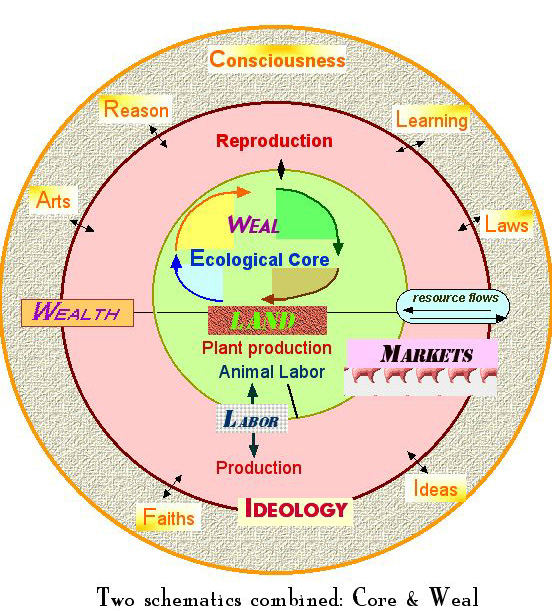
green is the ecological sphere
pink is the reproductive & productive economic sphere
and white matted is the sphere of consciousness.
Next
Bourgeois biases | Labor theory | Two competing views | Merchant's model | Ecological model | Technological model

2.
Alternate concentric circle, social model of materialism:
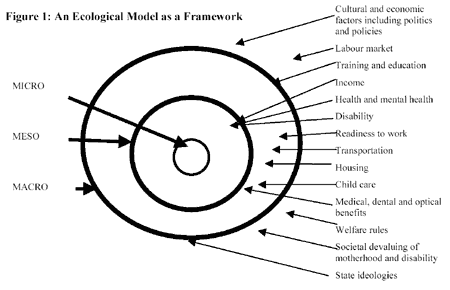
Micro meaning smallest scale.
Meso meaning in-between larger society and smaller sub-cultures.
Macro meaning nationally shared or cross-culturally shared attitudes and institutions among states.
bourgeois biases | Labor theory | Two competing views | Merchant's model | Ecological model | Technological model
An example of four related ideas that form a tetrad - or schema of four related items in production.
Social relations involve a process wherein the time devoted to the transformation of resources reveal the scope of the commitment of people and the scope of their impacts on their surroundings.
| |
|
|
| |
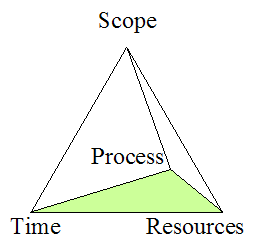 |
|
| |
functionality |
| |
frequency |
supports |
|
The technosphere is but a societal mimic of an ecological system.

Federal spending policy
poverty
bourgeois biases | Labor theory | Two competing views | Merchant's model | Ecological model | Technological model
Bourgeois virtues
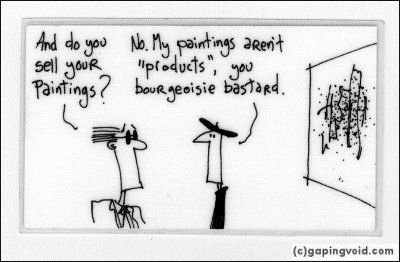
Links
Markets.
Willingness to pay.
Hardin, The Ostrich Factor.
Elinor Ostrom, Commons redefined.
bourgeois biases | Labor theory | Two competing views | Merchant's model | Ecological model | Technological model

![]()
 “What humanity is inflicting on itself and Earth is, to use a modern metaphor, the result of a mistake in capital investment. Having appropriated the planet’s natural resources, we choose to annuitize them with short-term maturity reached by progressively increasing payouts. At the time it seemed a wise decision. To many it still does.
“What humanity is inflicting on itself and Earth is, to use a modern metaphor, the result of a mistake in capital investment. Having appropriated the planet’s natural resources, we choose to annuitize them with short-term maturity reached by progressively increasing payouts. At the time it seemed a wise decision. To many it still does.





